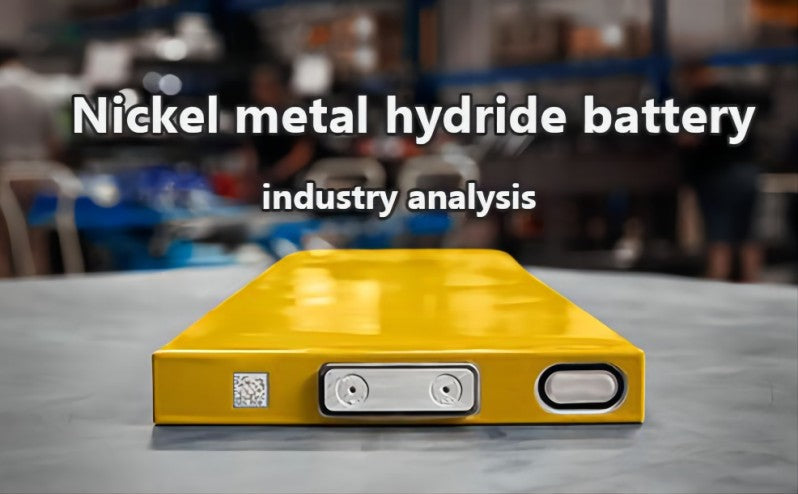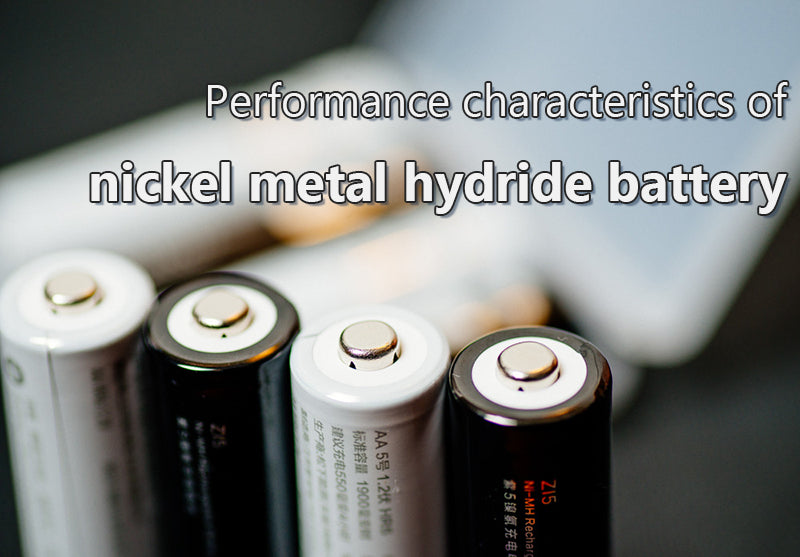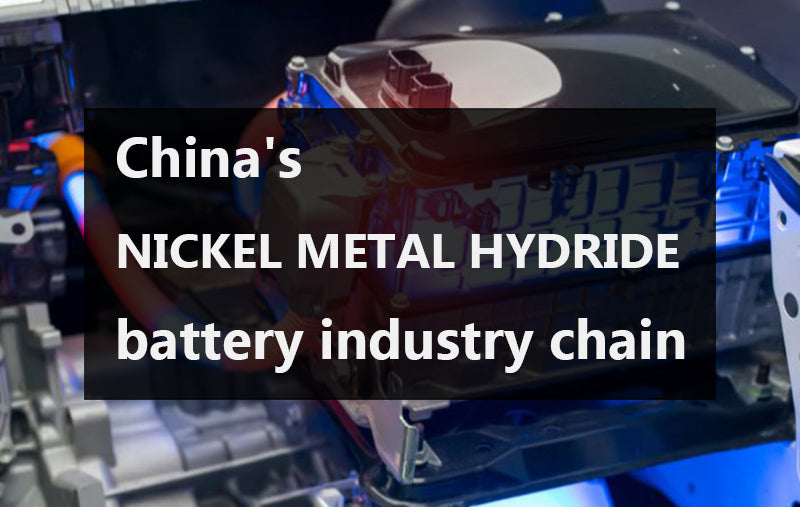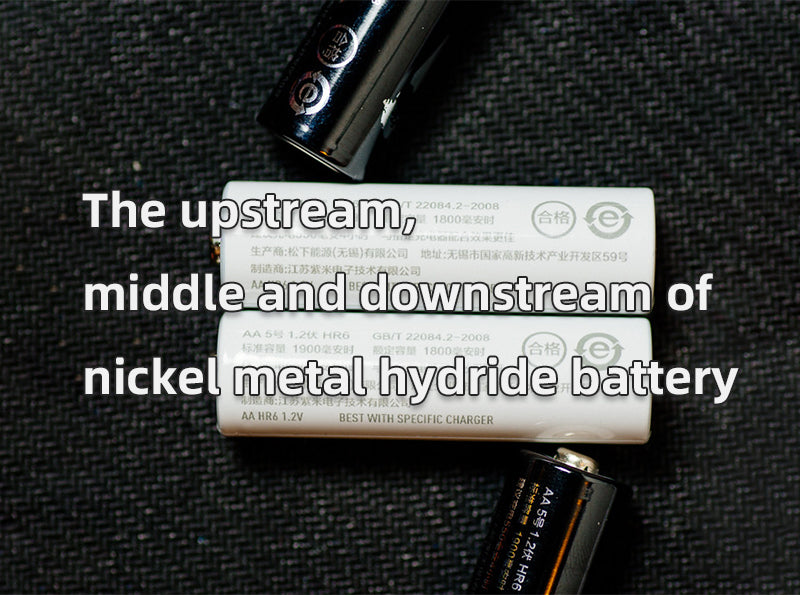
Main content:
At present, the development direction of Chinese nickel metal hydride battery industry is from the production of small and retail nickel metal hydride battery to the production of large-scale, power batteries and small batteries at the same time. Power battery plays an important role in battery industry and here is a top 10 power battery companies for you to help you know more about power battery industry.
The raw materials required for its production are highly localized, and the upstream and downstream supporting facilities are complete. Its upstream are mainly metal raw material suppliers and battery material suppliers. Midstream is responsible for the manufacture of various types of nickel metal hydride battery for battery manufacturers. Downstream are all kinds of electronic products that need to be assembled with batteries.
Performance characteristics of nickel metal hydride battery
Nickel metal hydride battery have obvious advantages and disadvantages, but the products are mature and stable and are still widely used. Nickel-metal hydride battery is a new type of green battery developed in the 1990s. It has the characteristics of high energy, long life and no pollution, so it has become one of the high-tech products in the world. Nickel-metal hydride battery is a new product developed on the basis of nickel-cadmium battery. It is environmentally friendly and has a very high recycling value.

It is the most environmentally friendly battery on the market. It uses nickel hydroxide as the positive electrode and high-energy hydrogen storage alloy as the negative electrode, which has greater energy than the previous generation of nickel-cadmium batteries. In general, nickel metal hydride battery have the advantages of good safety, good consistency, excellent high and low temperature performance, good environmental friendliness, and high recyclable value.
Compared with emerging lithium-ion batteries, nickel metal hydride battery have relative advantages. For example, lithium batteries cannot continue to work in extreme environments, while nickel metal hydride battery can, use close to life and long-term overcharged lithium batteries will swell and leak, while nickel Hydrogen batteries do not. Therefore, in the fields of aerospace, precision instruments, and other fields where battery tolerance and stability are considered, short-term nickel metal hydride battery will not be completely replaced until lithium batteries make a particularly significant breakthrough.
China's nickel metal hydride battery industry chain
China's production of nickel metal hydride battery exceeded 1.3 billion in 2006, replacing Japan as the world's largest producer. So far, the annual production capacity is about 5.5 billion. At present, the world's nickel-metal hydride battery production is mainly concentrated in China and Japan. China mainly produces small nickel metal hydride battery, while Japan mainly produces large-scale nickel metal hydride battery.
At present, the raw materials required for the production of nickel metal hydride battery in China are highly localized, and the upstream and downstream supporting facilities are complete. Its upstream are mainly metal raw material suppliers and battery material suppliers, mainly supplying nickel, manganese, cobalt, rare earth metals and other raw materials, as well as processed nickel foam and hydrogen storage alloys.

The midstream is responsible for the manufacture of various types of nickel metal hydride battery for battery manufacturers, and the downstream is for various electronic products that need to be assembled with batteries. From the perspective of upstream raw material supply, nickel metal hydride battery contain very many metal hydrides, of which nickel accounts for 55%, rare earth accounts for 32.2%, and the others are cobalt, manganese and aluminum.
Among the rare earth elements, lanthanum accounts for 20.2%, cerium accounts for 8%, neodymium accounts for 3%, and praseodymium accounts for 1%, all of which are the richest light rare earths in China. A major exporter of rare earths, this gives China a unique advantage in manufacturing nickel metal hydride battery. Midstream is a manufacturer of nickel metal hydride battery with high technical barriers, but China has already achieved breakthroughs in various technologies. However, at present, the world's small nickel-metal hydride battery market has approached saturation, and manufacturers are developing in a more intensive direction.
Due to the frequent occurrence of mergers, integrations and reorganizations in the industry due to cost increases, the winners will be eliminated, and the concentration will continue to increase. Products are also developing in the direction of more convenience, differentiation and cost-effectiveness. According to data, 85% of the world's nickel-metal hydride power batteries are produced in Japan. However, the relevant leading enterprises in China have realized the layout of the whole industry chain of nickel metal hydride battery and nickel foam raw materials, forming a complete industry chain, and even become the domestic supplier of Toyota hybrid vehicle power batteries.
The downstream market demand for nickel-metal hydride battery products is still further increasing. In the fields of aerospace and military, due to the harsh working conditions, only nickel-hydrogen batteries can adapt, and thanks to the continuous development of our aerospace and military industries in recent years, nickel-hydrogen batteries can maintain a basic living space. In terms of power batteries for hybrid vehicles, with the continuous increase in the production of hybrid vehicles in China, the demand for nickel metal hydride battery is also increasing.
The power and price of the mobile scheme have obvious advantages, so that car companies no longer need to purchase Japanese overall schemes and complete sets of equipment, and the domestic substitution advantage is obvious. Although the civil electronic equipment, especially the household appliances, is affected by lithium-ion batteries, the demand for midstream products is still increasing due to the continuous expansion of the downstream market space.

Application fields of nickel metal hydride battery
In the early days, nickel metal hydride battery were used to replace nickel-cadmium batteries in the aerospace field, especially satellites, and began to expand to the civilian market in the 1980s. Up to now, in the civilian field, nickel metal hydride battery are mainly used in two parts: hybrid electric vehicles (HEV) and consumer electrical products. Among automotive batteries, nickel metal hydride battery have relatively mature and stable technology. Compared with lithium batteries, even if nickel metal hydride battery are slightly insufficient in battery capacity, their stable safety is unmatched by lithium batteries that are not yet mature in technology.
With its stable discharge characteristics, high specific heat capacity, and excellent rapid charge and discharge capabilities, the performance of nickel metal hydride battery can be fully utilized in hybrid vehicles that require continuous rapid charge and discharge. For hybrid power packs such as shallow discharge and shallow charge The working mode of nickel-hydrogen battery is difficult to be replaced by lithium battery due to its full charge resistance and higher charge and discharge endurance.
Although in the long run, pure electric vehicles and fuel cell vehicles are the ultimate zero-emission solutions, in the medium term, hydrogen fuel cells are limited by the construction of hydrogen production, hydrogen energy storage, and hydrogen transportation, and the cruising range of pure electric vehicles However, the problems such as charging time and other problems cannot be solved for a long time. Hybrid vehicles may be the preferred solution to achieve energy saving and emission reduction, while taking into account technological development and economic benefits.
At present, more than 85% of the world's nickel-hydrogen batteries are produced in Japan every year. From the perspective of patent technology, Japan's technology is also ahead of China. The patent competition pattern of the world's power nickel-hydrogen batteries is the patent application of Japan, China and the United States in the nickel-hydrogen battery industry. The middle third is the world, accounting for 32.68%, 28.45% and 16.05% respectively. In addition, Toyota's "bipolar nickel-metal hydride battery" has recently been commercialized in Japan's new generation of AQUA hybrid vehicles.
Compared with the previous generation of nickel metal hydride battery, the output of each cell in the bipolar nickel-metal hydride battery is increased by 1.5 times, the number of cells contained in the same space is more than 1.4 times the original, and the total output is increased by about two times. The emergence of "bipolar nickel metal hydride battery" indicates that the performance of nickel metal hydride battery has room for substantial improvement, and may enter the field of pure electric vehicles in the future.

Small nickel metal hydride battery market remains stable
Nickel metal hydride battery have been widely used in professional electronic equipment, lighting, cordless home appliances, portable printers, mobile digital products, telecommunication equipment, laser instruments, and electric toys and consumer electronics. These products originally used nickel-cadmium batteries. Before 2012, the main tone of the market was the elimination of nickel-cadmium batteries in the low-end market. Around 2014, lithium batteries also entered the market due to cost reduction and began to squeeze the market space of nickel metal hydride battery. According to the statistics of 2013, the market share of non-power battery nickel metal hydride battery is relatively large in retail, cordless phones, vacuum cleaners and personal care equipment.Summary
Different hybrid configuration batteries have different needs, but they all pursue safety, high rate, and long life. Nickel-metal hydride, ternary, and lithium iron phosphate will coexist for a long time, and nickel metal hydride battery are of great significance to the development of the industry.
Related article: nickel-metal hydride vs lithium ion AA batteries, nicad vs lithium, metal air battery